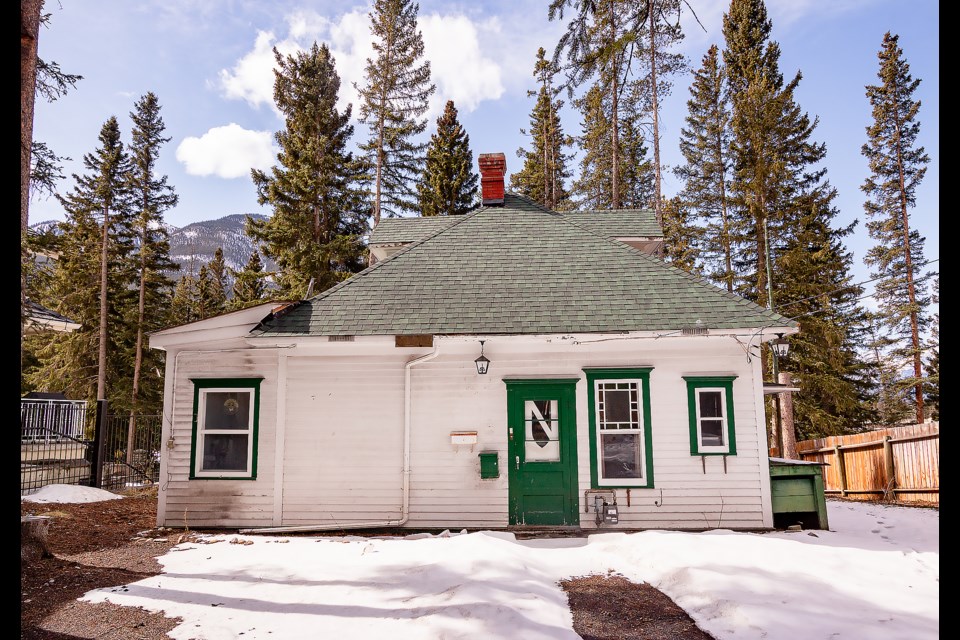BANFF – Plans are underway to restore the historic 1908 Rutherford House in Banff – the former summer cottage of Alberta’s first premier Alexander Rutherford.
Bowstrings Heritage Foundation is now the leaseholder of the riverfront cottage at 525 Buffalo Street, which has both cultural and architectural value to Banff.
Heritage preservationists say the cottage with its wrap-around verandah is, remarkably, largely unchanged since Rutherford’s death in 1941.
“It is one of the last remaining examples of early residential cottages in Banff along the riverfront lots,” said Joel Piecowye, of Shugarmann Architecture and Design, during a March 17 Banff Heritage Corporation meeting.
“The building has fortunately been relatively unaltered over its lifespan, although there has been one small addition done along the southern side… and we’re also proposing removing that addition to bring the cottage back to its original form.”
As part of the design concept to restore the Rutherford cottage to its 1908-era design, Bowstrings Heritage Foundation has also applied to the Town of Banff for a development permit to add another dwelling on the site, to be linked to the heritage home by way of connector.
“We would add on a little neck to connect it to a small lower-scale new building that would serve as a residence, say for a steward or custodian of the site,” said Peter Poole, president of Bowstrings Heritage Foundation.
The first premier of Alberta, Rutherford commissioned J. Luckett in the spring of 1908 to build a small cottage in Banff overlooking the Bow River.
For Rutherford, the two-storey frame cottage represented a haven far from the constant pressures of government business.
Not only was Rutherford Alberta’s first premier, he also co-founded the University of Alberta.
Piecowye said Rutherford was elected and sworn in as the first premier after the leasehold for the riverfront property was acquired in 1905, adding that the cottage was completed in 1908.
“When the cottage was not in use by the Rutherfords, he would provide the cottage for faculty of the newly established University of Alberta so faculty could use the space for education purposes,” he said.
“The house itself does have history connected with the University of Alberta.”
Part of the plan is to reconstruct the interior house so that it has authentic to the original form as possible.
In addition, the owners are working on energy efficiency plans for the buildings.
“Energy conservation targets for creating carbon neutral or net-zero buildings are becoming more and more of a thing, and they are going to be very difficult to attain with a lot of heritage houses,” said Piecowye.
“What we’ve done to try to future-proof this house is bring in an energy consultant. He will be trying to work with us to make this a case study where this building will be designed to be a 2050 carbon neutral home.”
Included in the plans are improving insulation, along with looking at solar on the new development.
“This will hopefully be the last renovation that this house will need for the next 50 years to 100 years, so when this house is done, the goal is this house will meet all of the energy targets that Canada will need to make the country into a net-zero country,” said Piecowye.
“The only thing that will be needed to make this house completely carbon neutral is eventually for the Alberta government to make the actual grid green, so by using clean energy, since the only thing in this house will need to heat it and keep it powered is electricity.”
Roland Charpentier, a member of the Alberta Association of Architects who sits on the Banff Heritage Corporation, congratulated the team on the work being done.
“A lot of things are well done on this project, certainly the addition remains subservient to the historic building,” he said.
“You took your cues from the historic building, but you didn’t try to replicate them and I think it’s a good example of how to do additions.”
The goals of Bowstrings Heritage Foundation include the acquisition and restoration of heritage buildings for reuse or new purposes to build community.




